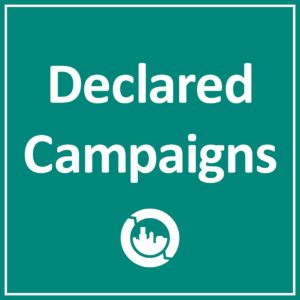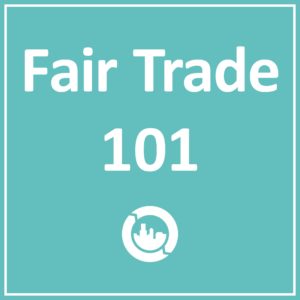Day 2 at CONACADO: From cocoa pod to delicious bean!
In March, Fair Trade Towns USA sent 12 volunteer organizers on a 7 day learning tour of Fair Trade farms in Dominican Republic where they built the people-to-people ties that make working for Fair Trade so meaningful. The Travelers came from town and city campaigns all over the country to see the effects of their hard work visiting cocoa, coffee and banana farms, as well as a sweat-free apparel factory. This series chronicles our trip through the eyes of a different organizer each day. This blog post comes to us from Kendra Penry of Houston Rescue & Restore and Fair Trade Houston.First stop after harvest, quality control:

Here are the cacao seeds after being removed from the pod and "corazon". They are still covered in thick mucilage which decomposes during the fermentation step.
What a wonderful opportunity to learn about exactly how much goes into the chocolate we eat every day! The beans are removed from the cacao pods and the “corazon”, or heart membrane of the cacao, by the farmer and brought to the processing area as a seed. Once there, the quality control is very regulated. First classified by size, damage, or sickness, the highest quality and low quality beans are separated throughout the process. The larger beans tend to be the higher quality. Low quality beans are set aside to be used for body care or other products, but not intended for eating chocolate. Sanchez Organic is the classification for lower quality, Hispaniola for higher quality. This internal quality control is what leads to the Fair Trade chocolate bar in your local grocery store being so delicious.
Smells bad, but tastes good
The separate qualities of cacao beans are then fermented in three stages in hermetically sealed boxes. While this process really does smell pretty bad, as our host Hector Romero said, it is essential to giving chocolate the flavor, color and smell that we enjoy so much. It is a five day process just to take the bean from the seed to the drying stage! When the steaming beans do emerge from the final box, they are laid out to dry, a process that could often be sidetracked by rain, but CONACADO has covered drying structures, much like greenhouses, to dry beans in any type of weather. The drying must continue until the beans reach 7% humidity as that is the international standard, but it starts at 70% after the fermentation process. They then “guillotine” the beans to make sure the insides are not affected by mold or disease. Less than 1% imperfections are allowed so the beans are checked continually for quality. Once they are dry, they are packaged and sorted into the warehouse areas classified by quality, or location where grown. When the day is too rainy, there is an artificial dryer, but in the interest of also protecting the environment, this method is reserved only for the rainy season. It requires firewood, because oil or any other method cannot be used since it is not organic material, but as part of the Fair Trade process, protecting the environment is also important so CONACADO tries to avoid using firewood when possible.
 The artificial drying process would hold 5 tons, and the temperature higher than 45 degrees Celsius. Once dry, they go through a funnel to clean/classify out the unwanted stuff which is composted. A person then sorts through the larger “waste” to be sure no beans go through. Whether artificial or not, once dried, the cacao beans are loaded into bags that weigh about 70 kgs and shipped to the port which takes about 45 minutes. The low quality beans are kept separated and could be sold to anyone for use in any number of products.
The artificial drying process would hold 5 tons, and the temperature higher than 45 degrees Celsius. Once dry, they go through a funnel to clean/classify out the unwanted stuff which is composted. A person then sorts through the larger “waste” to be sure no beans go through. Whether artificial or not, once dried, the cacao beans are loaded into bags that weigh about 70 kgs and shipped to the port which takes about 45 minutes. The low quality beans are kept separated and could be sold to anyone for use in any number of products.
The whole process is labor intensive and during the official harvest season of April-June, they could have over 200 people working on just this process. In the meantime, they are visited regularly by Fair Trade certifiers from FLO who stay for 15 days, seeing farms, sampling the cacao, and verifying the entire process maintains Fair Trade standards. The cacao not exported may be sent to a variety of places, one of which is the Asociacion de las Mujeres.
The Experience:
The CONACADO processing plant experience was only the culmination of a two day experience with the cacao farmers of the CONACADO association and what a two days it was. The days were an amazingly real Dominican experience that so few visitors to this country get to see. Waking up without an alarm clock, with no set schedule and a cacophony of roosters – what a way to start a day! The rest of the day would be spent with the welcoming and smiling families of the association that were happy to help us explore their farms and taste their hard work as expressed through beautiful fruits and delicious vegetables.
The whole experience is truly eye-opening to those of us whose whole experience with chocolate previously consisted of choosing from a variety on a shelf, proceeding to a cash register, and then unwrapping it to eat. So many hands must come into contact with this one product just so that we can have a few moments of enjoyment. While this fact could seem discouraging, it was pivotal to understand that the farmers and workers were so proud of all that work that it can only help us to enjoy it even more.
The experience at the processing and fermentation process was equally impactful as it completed the picture of the  source country’s work in creating chocolate. The details of the process, though, fade in comparison to the passion and love of the people who achieve them. Many of us will forget the levels of humidity necessary to export cacao beans, but no one could forget learning to dance bachata with our host families, tasting fresh limones from the tree on the road to the river, seeing the pride on women’s faces as they explain how they take mere beans and make a delicious treat, or laughing while playing El Escondido (hide and seek) with our family’s children.
source country’s work in creating chocolate. The details of the process, though, fade in comparison to the passion and love of the people who achieve them. Many of us will forget the levels of humidity necessary to export cacao beans, but no one could forget learning to dance bachata with our host families, tasting fresh limones from the tree on the road to the river, seeing the pride on women’s faces as they explain how they take mere beans and make a delicious treat, or laughing while playing El Escondido (hide and seek) with our family’s children.
As supporters of Fair Trade we must recognize the actual work, but we must also remember to see not just a label but also the people who make the label possible. Their passion must infuse ours and our work must support theirs. CONACADO, therefore, was not just a lesson in chocolate but in humanity and how we are all connected no matter our country or language through the products we use and the enthusiasm we have to protect our people and our planet. Thank you CONACADO for welcoming us to the Dominican Republic in such a beautiful way and for reminding us why we do what we do!





You must log in to join the discussion. If you are not already a member registering is easy.